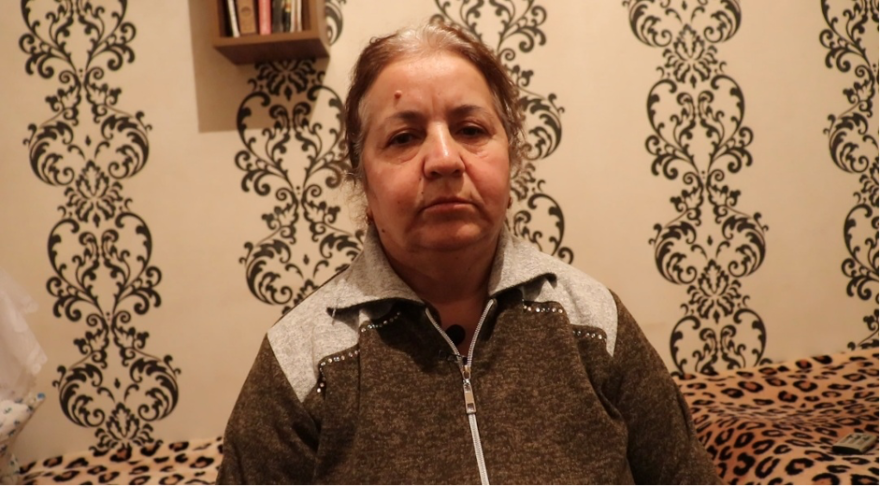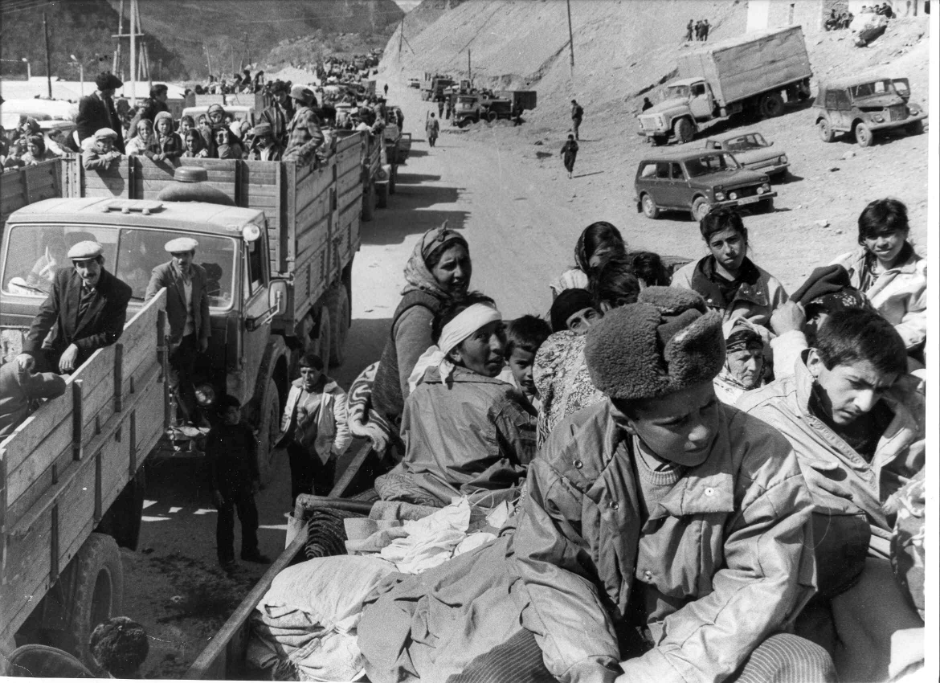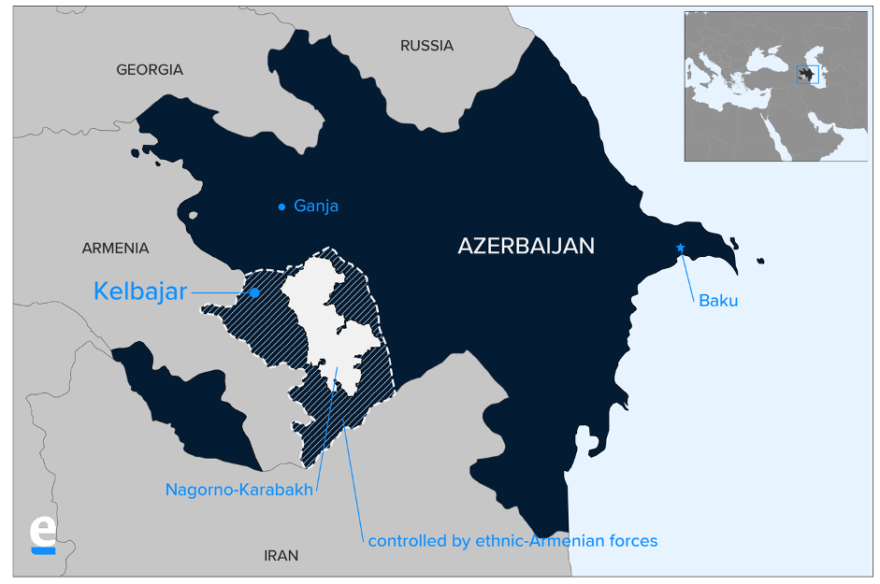
Azerbaijanis returning to Kelbajar
The first Nagorno-Karabakh war, which resulted in a ceasefire in 1994, left around a million Azerbaijanis homeless, among them internally displaced persons, including people who had been deported from Armenia since early 1990s. They accounted for about 10 percent of the Azerbaijan’s population, one of the highest rates in the world. The devastating war on Nagorno Karabakh, an ethnic-Armenian majority enclave in Azerbaijan, ended with Armenian forces taking control of enclave and seven adjacent districts, creating a security buffer zone around Nagorno-Karabakh and a land connection to Armenia. The recent renewed war on 27 September, dubbed the ‘Second Nagorno-Karabakh War,’ lasted six weeks and ended in a truce brokered by Russia, which began on 10 November 2020. Armenia, as the losing side, agreed to return to Azerbaijan most of the territories which it occupied in the early 1990s.
One of the regions greatly affected by the Nagorno-Karabakh war is Kalbajar. The two sides deeply disagree on the history of the region and facts surrounding recent events there. The NHC has not visited Kalbajar recently ourselves, but are able to present two articles describing reactions to the agreement from both sides of the conflict. The first is written by a Norwegian journalist on the Armenian side immediately prior to the peace agreement, the second is a report by an Azeri journalist from the perspective of IDPs in Baku. This article is written by Samira Aliyeva from Anews group in Baku. And here you can read our statement about the need for an international commission of inquiry into war crimes.
As the Russian-brokered deal has silenced the guns in Nagorno-Karabakh conflict zone, many Azerbaijanis from the recently liberated districts are looking on, wondering if they will finally be able to return home. Among those hopefuls include residents of the Kalbajar district that was occupied by Armenian forces in April 1993.
Watch this movie made by journalist Samira Aliyeva from Anews group in Baku (the article continues below the video):
Read more about Azerbaijan here.
Kelbajar, the most high-mountainous region of Azerbaijan, is located outside Nagorno-Karabakh and was one of the seven Azerbaijani districts under occupation. Kelbajar was conceived to be a buffer zone to be eventually given back to Azerbaijan as part of a comprehensive peace deal. However, that notion later replaced by the solid conviction in Armenia that Kelbajar and other 6 districts around Karabakh are integral parts of the Armenian homeland, never to be surrendered.
The territory’s population of about 58,000 was almost entirely Azerbaijani before the capture of the city in 1993. Its occupation by Armenian forces was one of the most controversial episodes of the war, ending with the forced and massive expulsion, under miserable conditions, of the Azerbaijani population.
A report by Human Rights Watch in 1994, said the Armenian troops had driven out thousands of Azerbaijani civilians from Kelbajar who had been pressured up a frigid high mountain go on foot to flee for their lives and without time to take their possessions. Hundreds of people froze to death attempting to flee. The occupation of Kelbajar had prompted Turkey to break relations and closing the border with Armenia and the United Nations Security Council to issue its first resolution related to the war, calling on the Armenians to withdraw. While all the Azerbaijanis were displaced, Kelbajar was looted and many Armenians moved into their homes.
Now, the Azerbaijani people of Kelbajar are given an unbelievable hope of return after 27 years to their native houses. Under the ceasefire deal, their district was to be handed over from Armenia to Azerbaijan on 15 November, but the timetable was extended to 25 November on, what Azerbaijan said, was due to the humanitarian considerations to ease the trouble for Armenians in Kelbajar to leave.
Dozens of video footages showed the Armenians set the houses on fire on and destroy the infrastructure before fleeing to Armenia on the eve of a deadline, making the region uninhabitable and unusable for the Azerbaijanis to move in to their own houses.
Watching how the Armenians burning their homes as they fled, many Azerbaijani people of Kelbajar, who have settled in student dormitories, schools, kindergarten, hotels and other makeshift houses throughout Azerbaijan since the past 27 years of occupation, were in tears and frustration over what they called “an act of vandalism”.
Tahir Hasanov, 64, currently lives with his family in an overcrowded and shabby dormitory in Baku’s Binagadi district after he fled Kelbajar in 1993. This dormitory, which is highly overcrowded with communal kitchen and sanitation facilities and lack of privacy, was formerly designed for students during Soviet time. Laundry hangs drying along the corridors of dormitory, which has one bathroom and toilet on each floor. One can feel the pungent odors from a malfunctioning sewage system in 9 storied building.
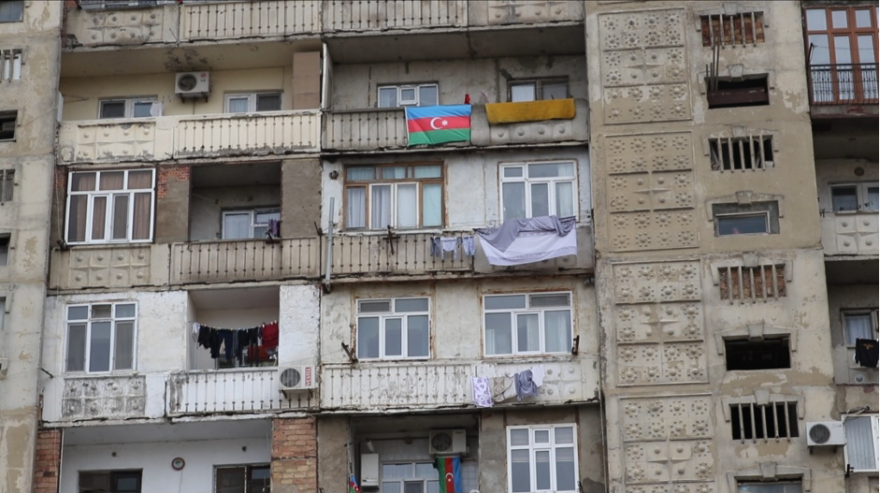
Hasanov said: «These houses in flames were our gorgeous homes in Kelbajar. I recognized many of them while watching as I know many parts of Kelbajar. Armenians first occupied them, enjoyed there in our houses, and now they vandalize them before vacating. See, what miserable condition do I live here in this one room for 27 years? How come Azerbaijan tolerate and extended the timetable for them to leave?»
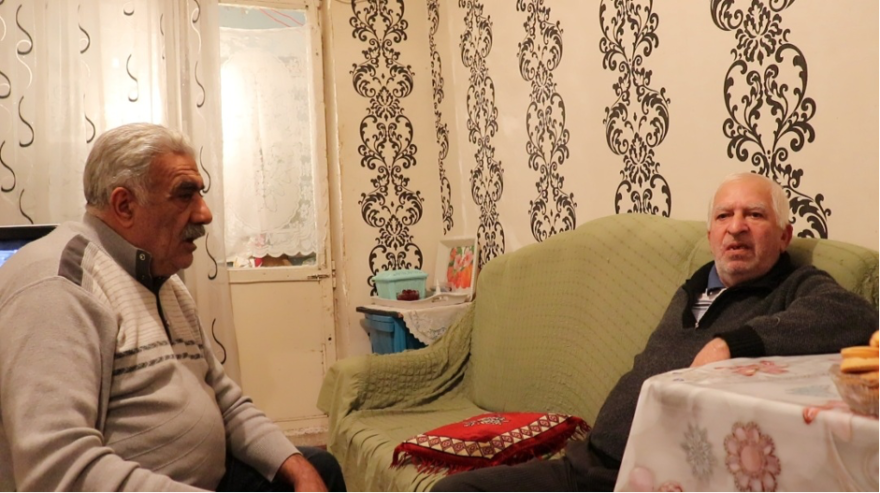
Ojagverdi Mursalov, 70, worked as a truck driver after graduating from high school in Kalbajar. When the war broke out in 1990s, he joined the Azerbaijan army. «The day Kelbajar was attacked by Armenian troops, we were given less than 10 hours to flee, or Armenian war helicopters were to bomb us. Many Azerbaijani civilians hardly ran for their lives through snowy mountains for several days. Many died due to freezing and snowy weather during escape. But, how come did the Azerbaijani government give Armenians an extra 10 days to empty Kalbajar now? They wiped out whole district and mined it to hinder our return.»
Mursalov says his family could not take any of their belongings, which remained for the Armenians, during the escape. «At the time of occupation, my two kids were schoolchildren. When we fled, we only took their books. What would you put in a car? The car had 6 seats. 14 people were sitting in each other’s arms. Everything we built thereover the years remained for the Armenians. We couldn’t take anything else, but luckily survived the probable massacre or becoming hostage» he said.
Antiga Ismayilova, 77, used to work in a library in Kelbajar. She remembers how peacefully the Azerbajanis got along with Armenians. «Armenian merchants used to bring fish and other goods to sell in Kelbajar. We were happy and never argued or discriminated each other. But the war and subsequent occupation changed everything and now we have a deep hatred, especially seeing how they burn our houses».
Ismayilova, living in a one – room apartment, misses her house and happy life she had in Kelbajar. «We had a big house, with 5 rooms and a 12-meter long hall and lots of cattle. Our car, furniture and everything else were left to Armenians when my family ran away to survive. My family ended up living in camps and then in this dormitory.» Ismayilova has seen her house in the video footages and said the house was only painted by the Armenians who moved in.
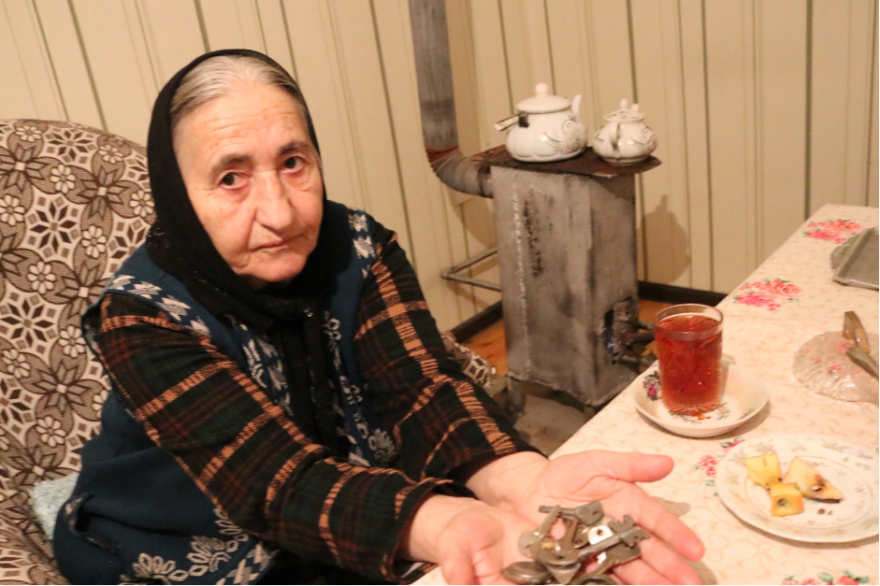
Like many other Kelbajar IDPs, Ismayilova keeps the keys of house in Kelbajar. «I keep all these keys in past 27 years, wishing to return there one day. I was born and lived almost 50 years there. I cried a lot seeing how the houses are being burned and city destroyed by Armenians. Despite of that, many Kelbajar Azerbaijanis long for returning to our native district.»
According to the Crisis Group, a conflict prevention organization, the other territories during the Armenian occupation, had been also mostly destroyed and “systematically levelled so that only foundations remain”, and even electrical wiring, pipes, and other infrastructure “have been sold as scrap” by Armenians. The group also reported on how the Armenian diaspora organizations and de-facto government of Nagorno Karabakh had set up new villages and motivated the people from Armenia and abroad to move into Kelbajar and other occupied areas as part of the illegal settlement policy.
Kalbajar, heavily mined and destroyed, it might be difficult for Azerbaijanis to return in a short run. But, many inhabitants, like Mehpara Mursalova, 63, is waiting the first chance when the government facilitates her and other IDPs to go back to their old lives in Kelbajar: «When my family fled, we thought it is temporary and we will soon be back. We have watered the flowers so that they would not dry out until we returned. I remember we even left without closing our houses at that time so that we could return soon. After over a quarter century, finally I am no longer an IDP, that is happiness I feel. I still yearn for return, live and die in my own house in Kelbajar.»
